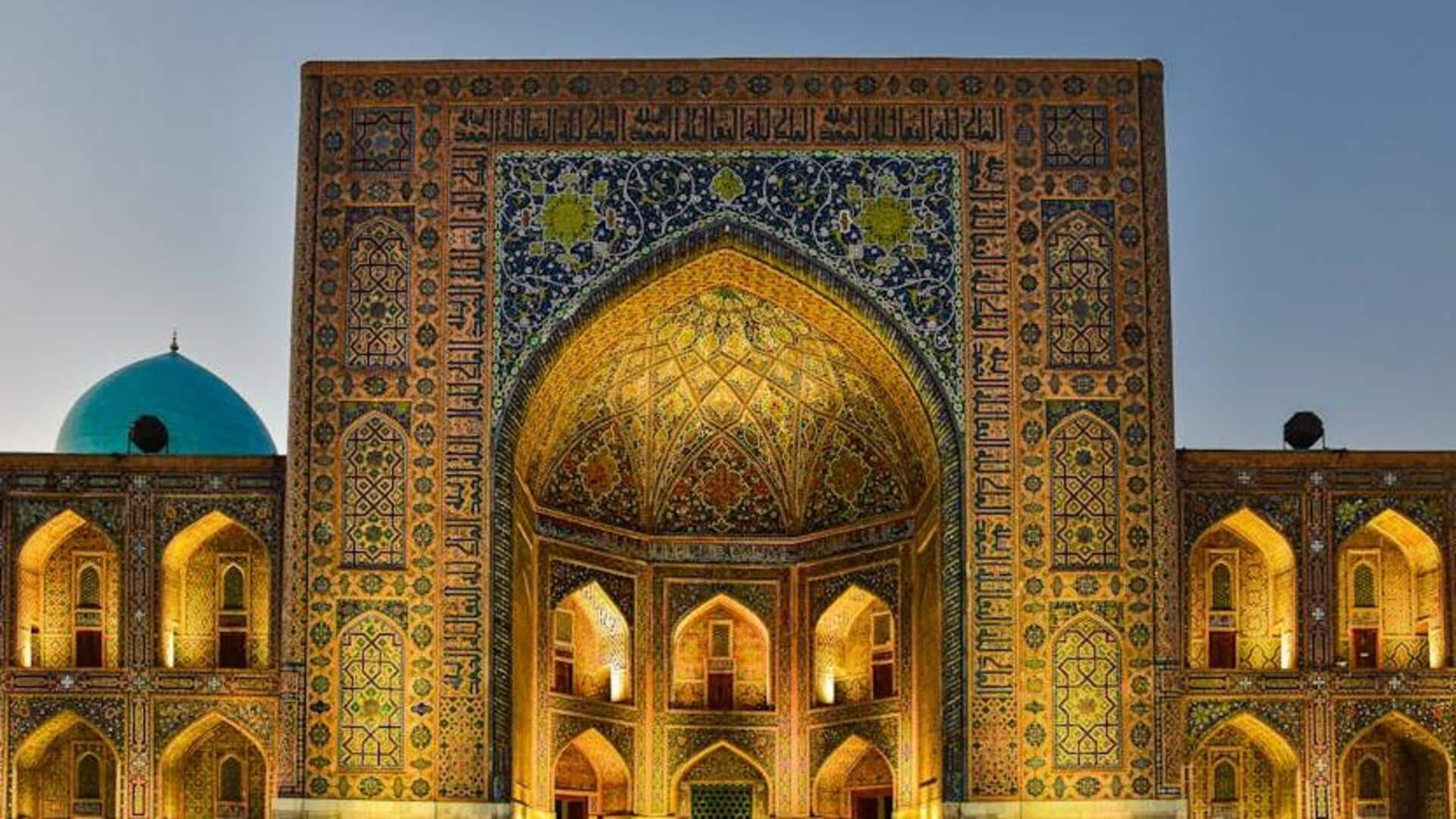
Samarkand, Uzbekistan: A journey through time and architecture
What's the story
Samarkand, a city in Uzbekistan, stands as a beacon of ancient architecture and history. Known as the crossroads of cultures, it has been a vibrant melting pot of civilizations for centuries. The city's exquisite mosques, mausoleums, and madrasahs narrate tales of its splendid past. These landmarks make Samarkand an essential destination for history buffs and architecture enthusiasts alike.
Heart of Samarkand
Unravel the mysteries of Registan Square
Registan Square is the centerpiece of Samarkand's architectural marvels. Surrounded by three ornate madrasahs - Ulugh Beg, Sher-Dor, and Tilya-Kori - this public square was once the heart of the ancient city. Visitors can explore these buildings to admire their intricate Islamic artistry, including majestic domes and vibrant mosaics that have stood the test of time.
Necropolis walk
Step back in time at Shah-i-Zinda
Shah-i-Zinda is a breathtaking avenue of mausoleums dating back to the 11th-19th centuries. This Living King necropolis is revered for its stunning tile work and historical significance. Walking through this complex offers an intimate glimpse into Samarkand's past rulers and scholars. Each mausoleum has its own story, making it an essential stop for those seeking to connect with the city's rich history.
Architectural wonder
Marvel at Bibi-Khanym Mosque
The Bibi-Khanym Mosque was once one of the Islamic world's largest mosques. Legend says it was built by Timur as a gift for his wife Bibi-Khanym. Although partially ruined over time, restoration efforts have brought back much of its grandeur. Visitors can marvel at its massive blue dome and ponder over tales of love that inspired its construction while walking through its vast courtyard.
Star gazing
Discover ancient scripts at Ulugh Beg Observatory
The Ulugh Beg Observatory in Samarkand, built in the 15th century by the astronomer king Sultan Ulugh Beg, showcases the city's architectural and scientific heritage. This observatory, once among the world's most advanced astronomical centers, allows visitors to view remnants of an ancient sextant. This instrument was used for accurately measuring star positions, demonstrating medieval achievements in science.